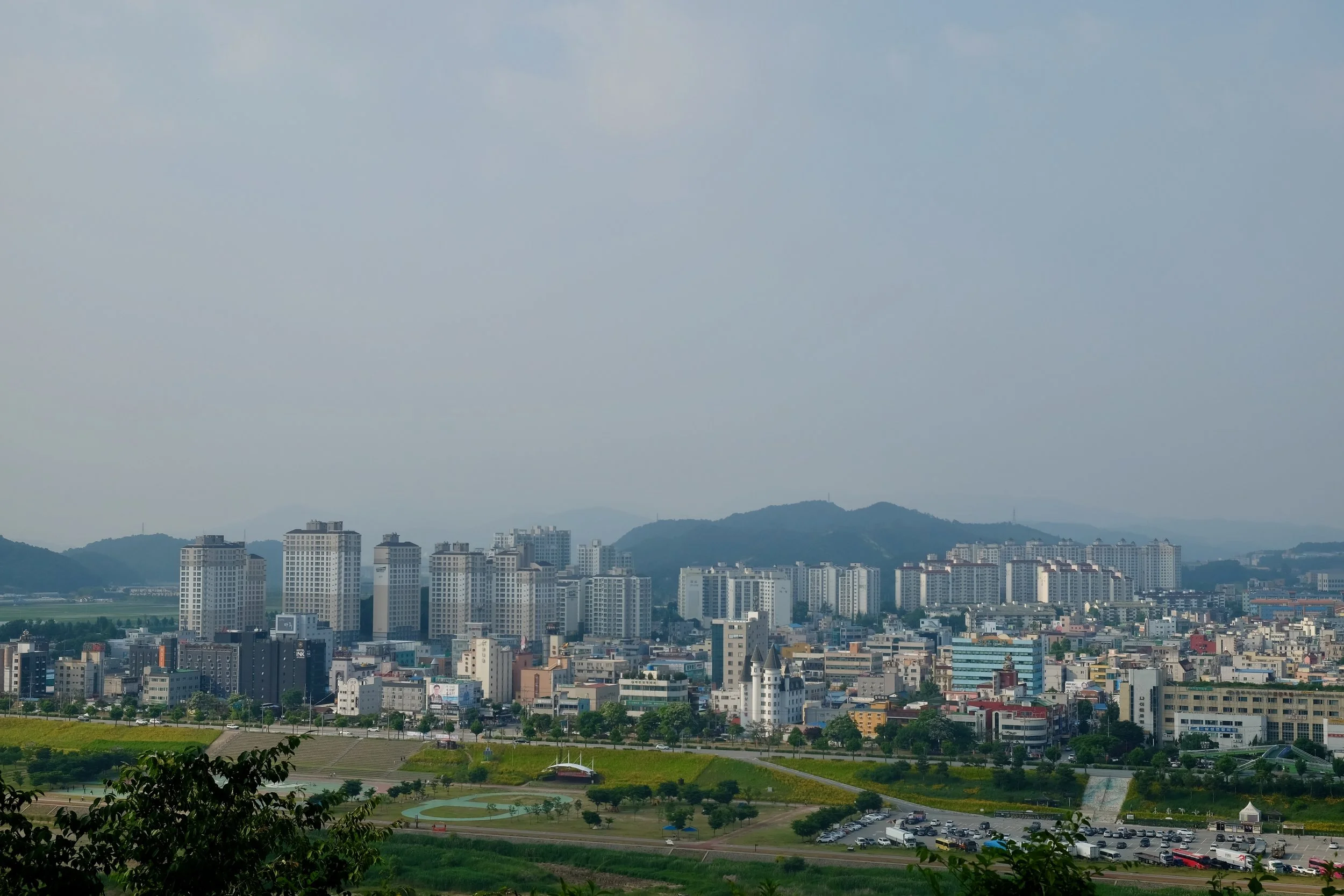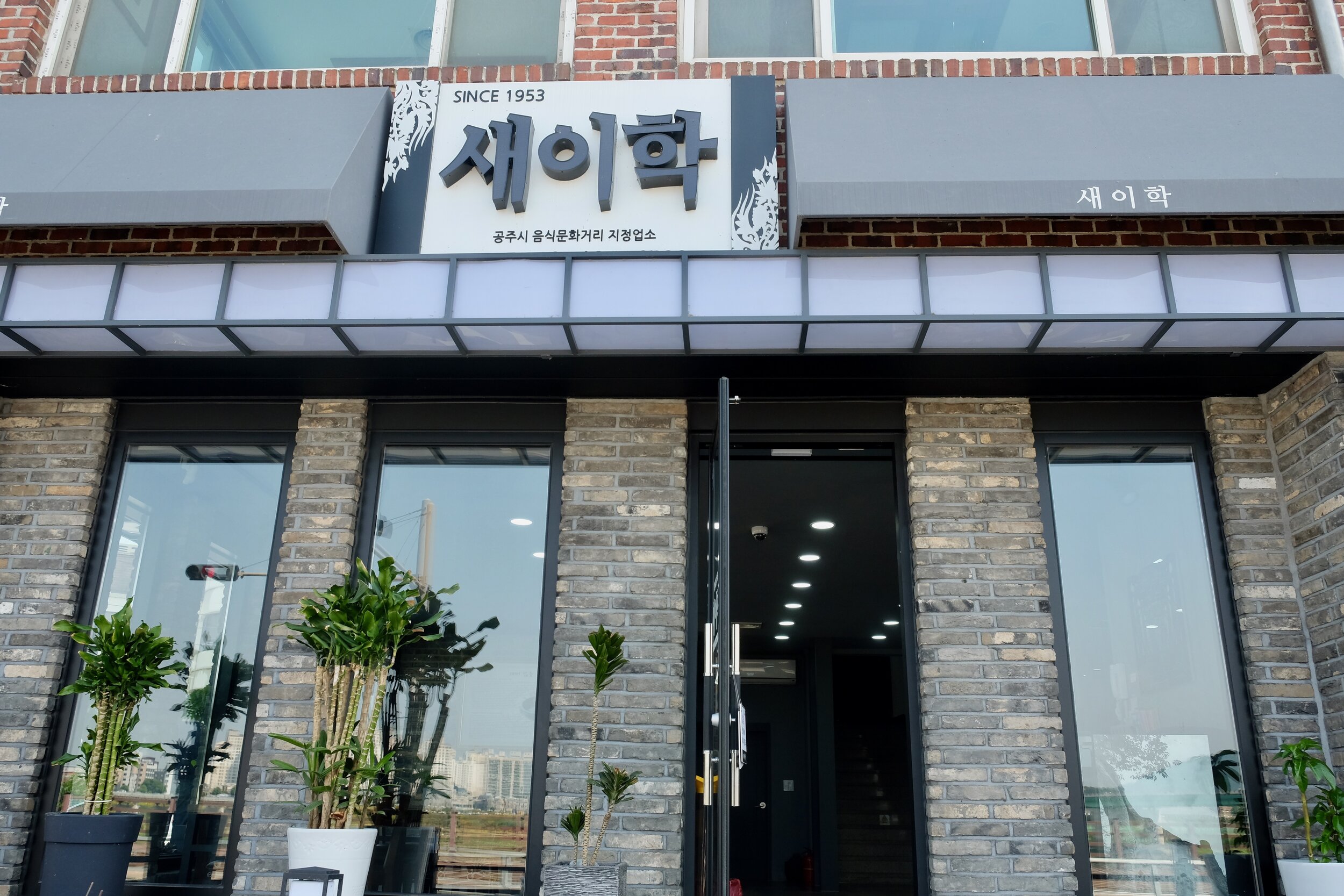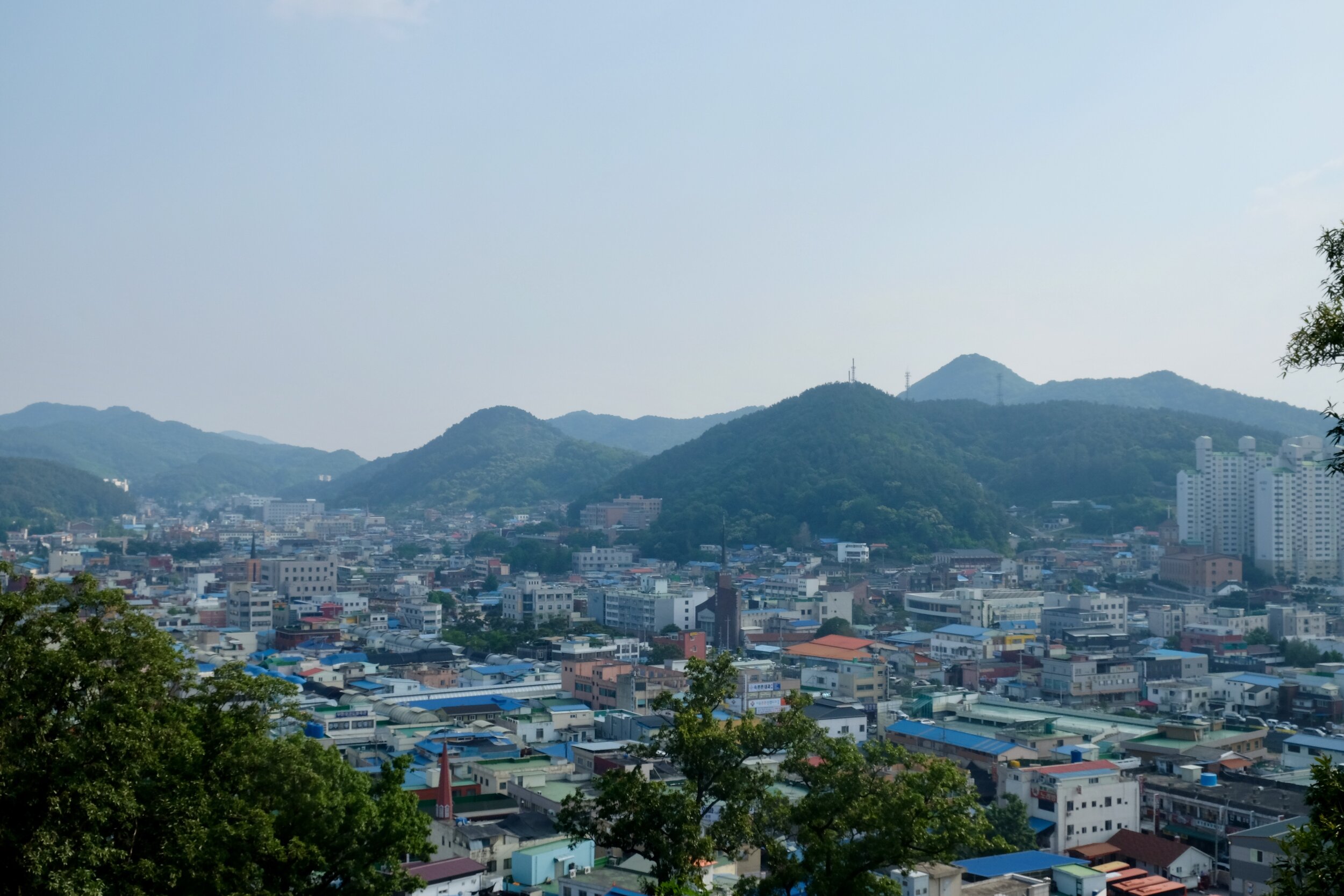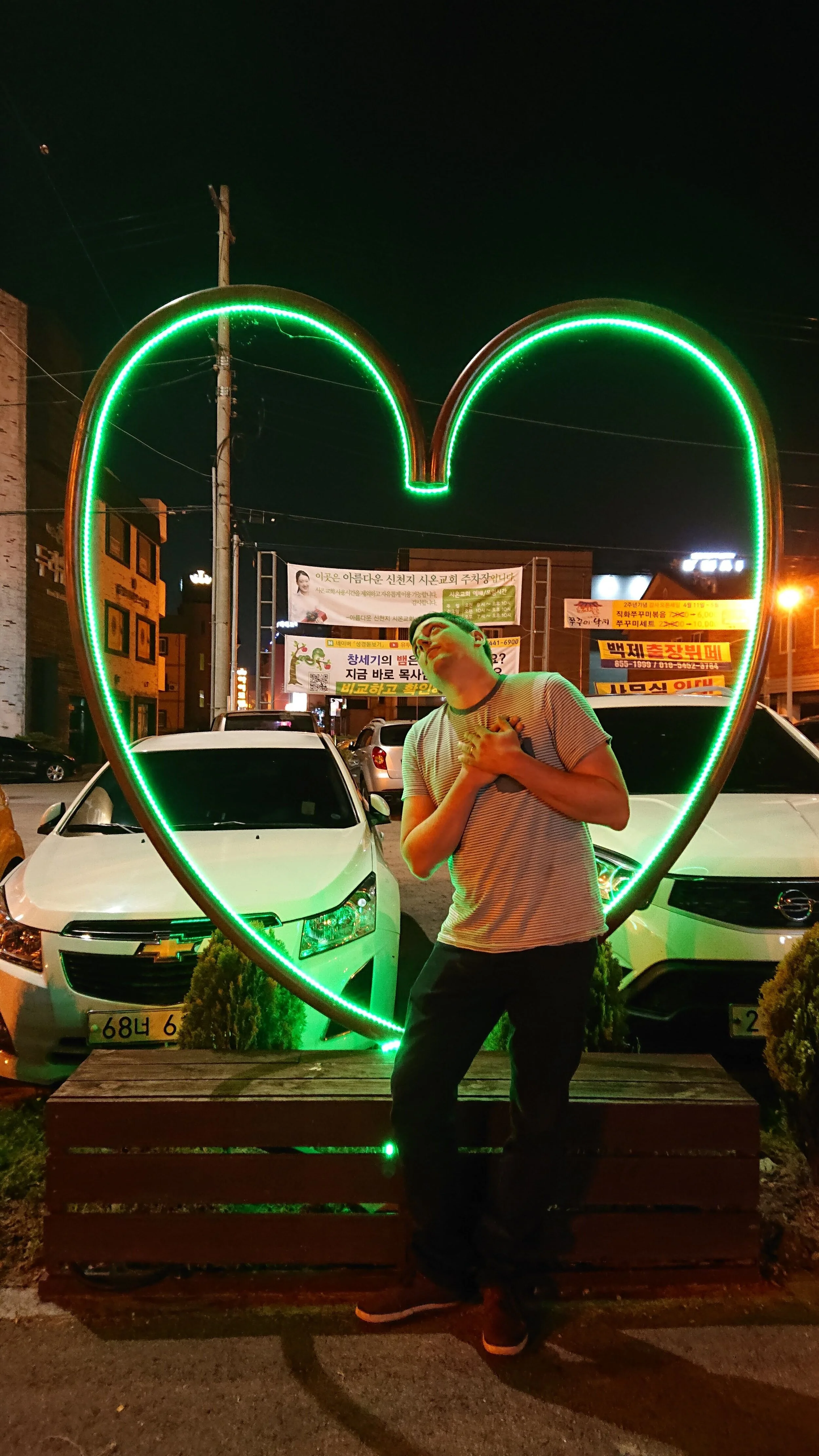We arrived in Gongju, a town only slightly less sleepy than Buyeo, for 1:30 PM. As always, the first order of business was to comb the local motel row, located just south of the fortress which is Gongju’s main attraction. Alas we came away disappointed, as everything we saw looked tired and old. Pressing on towards the bus terminal on the other side of the canal, things looked a little more promising.
Our perseverence was rewarded when we found the Khai Hotel - a new boutique place where a standard room will set you back 45,000 won – if you can get one. We were told they were all “booked”, so we had to shell out an additional 5,000 won for an upgrade. We were sceptical about the supposed lack of standard rooms, but in the end we were really happy with the room we got, which might just have been the best we had on the whole tour. It was incredibly clean, with modern amenities, English-speaking staff, and free coffee, breakfast, and ice cream(!).
Weirdly, we arrived before the appointed check-in time, which is something that’s never happened to us before, as these establishments tend to have rooms available at any time for people who, ahem, need to rest for a few hours. But nevertheless, we were given a room immediately, because we were foreigners. Interesting and perhaps another example of this whole “service” thing, but we didn’t complain.
Khai Hotel, 36 Neutinamu-gil, Geumseong-dong, Gongju-si, Chungcheongnam-do, South Korea.
This room was immaculate until we stuffed it full of smelly kit. Also, notice the old fashioned rotary phone next to the computers.
Not one, but TWO PCs. This must be what that extra 5,000 won gets you.
15-2, Geumganggongwon-gil, Ungjin-dong, Gongju-si, Chungcheongnam-do, South Korea.
Lunchtime was at a lovely restaurant that overlooked the river, where we feasted on beef and rice stew for 16,000 won. It was wonderfully mellow, which is exactly the mood we were in. Perfect to get the strength up before a spot of temple-bashing.
For centuries, Gongju’s focal point has been the hilltop fortress of Gongsanseong, whose 2.6 kilometre-long perimeter wall was built from local mud in Baekje times, before receiving a stone upgrade in the seventeenth century. It’s possible to walk the entire length of the wall, which affords splendid views of Gongju and its surrounding areas, and will give acrophobes something to write home about.
The grounds inside are worth a look too, inhabited by squirrels and dotted with beautifully painted pavilions. Of the latter, Ssansujeong has the most interesting history - where the pavilion now stands, a Joseon-dynasty king named Injo once hid under a couple of trees during a peasant-led rebellion against his rule. When this was quashed, the trees were made government officials, though sadly, they’re no longer around to dispense advice.
Imnyugak is the most beautiful pavilion, airy and painted with much care. It’s a peaceful spot for a wee read.
He swears the skydiver position is comfy.
Around 7:45 PM, we headed out in anticipation to try Geumganggwan, one of the best restaurants in Gongju. Only to find that it closed at 8 PM. And that wasn’t the only one - as we watched the other restaurants turn their lights off one by one, we felt increasingly desperate until one establishment let us in under the condition that they serve a limited menu because “it was getting late”. At 8 PM.
So we settled on a pork BBQ and watched two more couples quickly come in after us and order the same thing. A final couple came in at 8:30 and were turned away, much to their (and our) dismay.
The moral of this story is: when in smalltown South Korea, get fed early.
The rest of the evening played out in front of an unusually beautiful convenience store with plenty of outdoor seating, where we engaged in a spot of al fresco rummy with the lit up fortress behind us. Best environment of the whole trip for a wee drink.






















